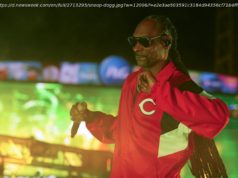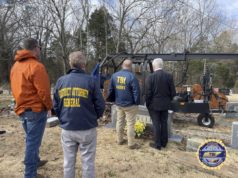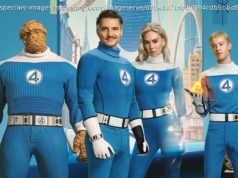What we found when we visited two battlefield re-enactments.
In collections of famous last words, you are likely to find my ancestor, Maj. Gen. John Sedgwick of the Union Army. As he surveyed his troops’ battle line, he said: “They couldn’t shoot an elephant at this distance.” Moments later, he was killed with a shot to the cheek by a Confederate sharpshooter.
In the nearly 155 years since his death and the end of the Civil War, Americans have been restaging its battles and skirmishes for their families and friends, among them my ancestor’s quip and killing. A spotlight is on this venerable hobby as we continue to debate the role of Confederate flags, memorials, names and statues in public life in the year since white nationalists, armed with guns, swastikas and rebel flags, descended on Charlottesville, Va.
At a Civil War re-enactment not long after the march in Charlottesville, I learned that General Sedgwick wasn’t remembered only for his ironic exit, but he was revered by his troops — real and staged — who called him “Uncle John” and copied his ( ample) facial hair.
The re-enactors all told me to be proud that this history was in my blood. Their easy familiarity with “Uncle John” points to the many advantages that Sedgwicks, who arrived on these shores in 1636, had getting into the history books. They were, after all, inclined to write them.
In the historic village of Zoar, Ohio, I witnessed the Battle of Antietam, 260 miles northwest of the original. The mostly white self-described living historians said they were there to “educate the public.” However well-intentioned, they perpetuated the notion that the war wasn’t really about slavery. Many avoided even saying the “s-word” because they preferred to keep things “apolitical,” they said.
For the nearly 600 re-enactors at Zoar, a weekend wrapped in scratchy wool and the culture of the 1860s was their idea of the perfect getaway. Many brought the whole family. While the “civilians” — women, children and those physically unable to fight — kept the fires burning in camp, the soldiers ran drills and prepared for battle, picking straws for who had to die first.
They were factory workers, teachers, lawyers and even veterans of today’s wars. Some were descendants of Civil War soldiers. Most were men, and all loved history. For them, the experience is somewhere between a spiritual communion with the dead and a Boy Scouts’ outing for grown-ups.
Zoar, with its four square blocks of pristine 19th century, plays its part. Local volunteers dress up and churn butter for families and school groups. Residents are obligated to keep their homes looking quaintly Victorian.
One troop organizer told me later that re-enacting was the fulfillment of a boyhood dream, and that it was a calling to inform the public about who really fought in the Civil War.
“When people think about black people in the Civil War, they think about slaves, but that’s not the whole story,” said Guyler Lambert, an African-American who is the president of the 102nd Michigan United States Colored Troops, a group formed by descendants of Michigan’s only black unit. “I think this is meaningful to people, black or white.”
Many of the troops in the 102nd had been enslaved themselves and were fighting to free others from bondage. All re-enactors talk of the bravery of Civil War soldiers, but for the members of the 102nd, fighting in the South meant risking re-enslavement — or worse — if they were captured.
I met a drummer, a member of the 102nd, who was playing for a period musical troupe called the Camp Chase Fyfes and Drums. He said he was struck by how many Confederate battle flags were being waved in the audience, not just on the battlefield: “I haven’t seen it displayed in such a flamboyant way by spectators at other events.”
The man, who asked not to be identified because of the disagreements among re-enactors over historical portrayals, said he was proud to honor the 102nd’s daring confrontation of prejudice.
“There was the idea that they would not make good soldiers because of their race, but they fought bravely,” he said. “It’s an honor to bring their stories to life for current audiences and expand people’s understanding of who it was that actually participated in the war.”
Josephine Sedgwick is a senior news assistant at The Times.
The Times sent a reporter to the 155th anniversary re-enactment of the Battle of Gettysburg, which was held this month. We offer an excerpt from the magazine-length article here:
In the last decade or so, the crowds at large scale re-enactments have dwindled. Longtime hobbyists are aging out and retiring — soldiers in their 50s and 60s filled much of the camp at Gettysburg — and younger people aren’t marching onto mock battlefields in nearly the same numbers.
Enthusiasts cite a number of factors. Video games are to blame, some grouse, while others attribute the decline to the rising expense of gear. A reproduction Civil War rifle alone can cost more than $1,000.
But many are more introspective about it. In the 1980s and ’90s, “the whole tone of the country was different,” said Thomas Downes, 68, a retired machinist from Cleveland, who has been re-enacting for the Union side for 38 years.
“Up until the last five or 10 years, the social causes of the war did not come into what we do,” he said. “We were paying tribute to the fighting man.”
“It wasn’t ‘I’m racist and I want to glorify slavery,’” he said. “Nobody really thought a lot about the social reasons of why the South went to war. It was just these poor guys who were underfed, undermanned, underequipped, fighting valiantly to the last man, until they couldn’t stand anymore.”
Brad Keefer, a 61-year-old corporal in the Union re-enactor ranks and a professor of history at Kent State University, said: “Re-enactors look at the war as a four-year period between 1861 and 1865 in which you can cut out all the stuff leading up to the war and very much ignore everything that happened afterward.”
“We don’t get tangled up in all the messy bits, which are the causes and outcomes, which are complicated and uncomfortable,” he said.
It’s a vision of history placed in narrow context. The military details are meticulously researched and recreated down to the stitching of a uniform, but the broader social and political realities of the Civil War — the profound struggle over slavery and emancipation, racism and equality, citizenship and disenfranchisement — are largely confined to the margins.
Still, those issues can no longer be ignored. After a white supremacist rally in Charlottesville, Va., in 2017, where demonstrators wore swastikas and carried Confederate flags, and where an anti-racist protester named Heather Heyer was killed, at least two smaller Civil War re-enactments were canceled. That the battle flag Confederate re-enactors carry is still used as a means of intimidation makes it hard to defend as a purely historical object, divorced from racist implications.
“You build a comfort zone for the hobby to function,” Mr. Keefer said. Pointing to the Confederate camp, he said: “And give them the benefit of the doubt that they weren’t at Charlottesville.”
[Read “The Decline of the Civil War Re-enactor” in full here]
Join us at 9 p.m. Eastern on Wednesdays as we examine topics related to race and culture on The Times’s Facebook page. This week we discussed how society hears black women’s voices when it comes to alleged sexual misconduct.






